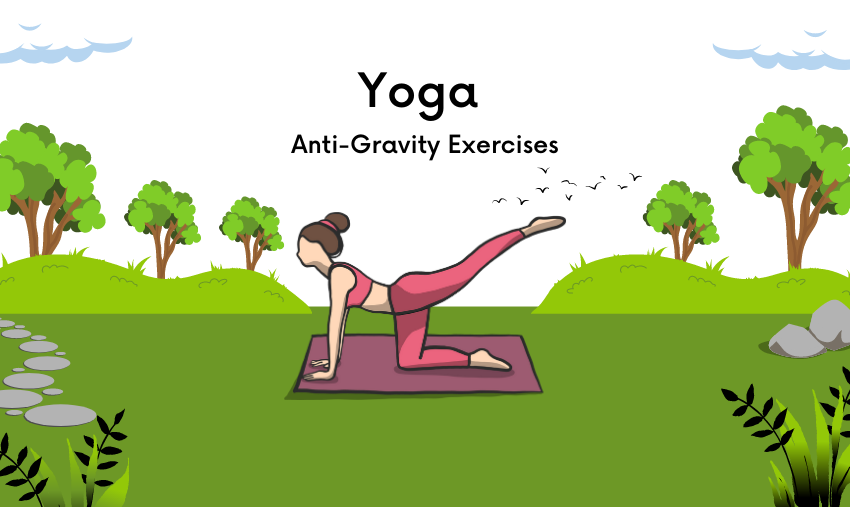Introduction
Are you tired of the same old exercises to manage your diabetes? Let’s explore some unique and effective alternatives: yoga and anti-gravity exercises!
Diabetes is a chronic condition that affects millions of people worldwide. It is characterized by high blood sugar levels over prolonged periods, which can lead to severe complications if not managed effectively. Lifestyle modifications, including a healthy diet and regular physical activity, are integral parts of managing this condition. This blog post will focus on the role of physical activities, specifically yoga and anti-gravity exercises, in managing diabetes.
The Importance of Physical Activity for People with Diabetes
Regular physical activity plays a crucial role in the overall management of diabetes. It helps in controlling blood sugar levels, reducing the risk of heart disease, improving mental health, maintaining a healthy weight, and enhancing overall quality of life. Studies have shown that physical activity can improve insulin sensitivity, meaning your body can use insulin more effectively to regulate blood sugar levels.
Furthermore, engaging in regular physical activity can have long-term benefits, such as slowing the progression of the disease and reducing the risk of developing diabetes-related complications like kidney disease, nerve damage, and eye problems.
Yoga and Diabetes Management
Yoga is an ancient practice that originated in India around 5,000 years ago. It combines physical postures, breathing exercises, and meditation, offering a holistic approach to health and wellness. Yoga’s holistic nature can be particularly beneficial for people with diabetes as it addresses not only physical health but also mental and emotional well-being.
Yoga’s Role in Diabetes
Improves Blood Sugar Control: Regular practice of yoga can aid in controlling blood sugar levels. Specific yoga postures or asanas can stimulate the pancreas, promoting the efficient use of insulin and leading to better blood sugar control.
Promotes Weight Management: Maintaining a healthy weight is crucial for people with diabetes. Yoga, particularly active styles like Vinyasa or Ashtanga, can be an effective way to burn calories and promote weight loss.
Reduces Stress and Enhances Mental Well-being: Stress can adversely affect blood sugar levels. Yoga is well-known for its stress-reducing benefits. The practice of mindful breathing and meditation can lower stress hormones, promoting relaxation and mental well-being.
Improves Cardiovascular Health: Cardiovascular disease is a common complication of diabetes. Yoga can help improve heart health by reducing blood pressure and improving circulation.
Yoga Poses Beneficial for Diabetes
Below are some yoga poses that can be particularly beneficial for individuals with diabetes:
Dhanurasana (Bow Pose): This pose stimulates the functioning of the pancreas and intestines. Therefore, it can help regulate blood sugar levels.
Vrikshasana (Tree Pose): Besides promoting balance and concentration, this pose also aids in strengthening the body.
Savasana (Corpse Pose): This is a relaxation pose that helps reduce stress and relax the body, aiding in better blood sugar control.
Remember, it’s essential to learn these poses under the guidance of a certified yoga instructor. Also, always consult your healthcare provider before starting a new exercise regimen.
Anti-Gravity Exercises and Diabetes Management
Anti-gravity exercises are activities that involve movement against gravity. They can be performed using specialized equipment like inversion tables or anti-gravity yoga hammocks or through bodyweight exercises like push-ups, pull-ups, and squats.
How Anti-Gravity Exercises Help in Diabetes Management
Improves Insulin Sensitivity: Anti-gravity exercises can help improve insulin sensitivity, meaning your body can use insulin more efficiently to control blood sugar levels.
Enhances Weight Loss: These exercises can be a fun and effective way to burn calories, promoting weight loss, which is beneficial for managing diabetes.
Boosts Overall Fitness: Anti-gravity exercises can improve cardiovascular fitness, muscular strength, flexibility, and balance, contributing to overall health and well-being.
Promotes Better Blood Circulation: Working against gravity can help improve blood circulation, which can be beneficial for individuals with diabetes as they often have circulation problems, especially in the legs and feet.
Examples of Anti-Gravity Exercises
Below are some examples of anti-gravity exercises that can be beneficial for individuals with diabetes:
Inversion Yoga: This form of yoga involves performing yoga poses while being suspended in the air using a yoga hammock. It allows for a full-body stretch and decompression of the spine.
Bodyweight Exercises: Exercises like push-ups, pull-ups, squats, and lunges involve moving your body against gravity. They can be done anywhere and require no special equipment.
Rebounding: This involves bouncing on a mini trampoline. It’s a low-impact exercise that can improve balance, coordination, and overall fitness.
Remember to consult your healthcare provider before starting a new exercise program, especially if you have any other health conditions or concerns.
Incorporating Yoga and Anti-Gravity Exercises into Your Routine
Both yoga and anti-gravity exercises can be beneficial for individuals with diabetes. However, it’s essential to incorporate them into your routine in a way that is safe and sustainable. Here are some tips:
Consult Your Healthcare Provider: Before starting any new exercise regimen, it’s important to consult your healthcare provider, especially if you have diabetes or any other health condition. They can advise you on what types and levels of physical activity are safe and suitable for you.
Start Slowly: If you’re new to yoga or anti-gravity exercises, start slowly. Begin with shorter, easier sessions and gradually increase the intensity and duration as your fitness improves.
Listen to Your Body: Pay attention to how your body feels during and after exercise. If you feel pain or discomfort, stop the activity, and consult your healthcare provider if necessary.
Stay Hydrated and Monitor Blood Sugar Levels: Stay hydrated during exercise and remember to monitor your blood sugar levels before, during, and after exercise, especially if you’re taking insulin or other medications that can cause low blood sugar (hypoglycemia).
Conclusion
Managing diabetes requires a comprehensive approach that includes a healthy diet, regular physical activity, stress management, and appropriate medical treatment. Physical activities like yoga and anti-gravity exercises can be effective tools in your diabetes management toolkit. They offer numerous benefits, including better blood sugar control, weight management, improved cardiovascular health, enhanced mental well-being, and overall fitness.
However, it’s essential to remember that everyone is unique, and what works for one person may not work for another. Therefore, it’s important to work with your healthcare provider to develop a diabetes management plan that fits your individual needs and lifestyle.
By incorporating activities like yoga and anti-gravity exercises into your routine, you can take an active role in managing your diabetes and improving your health and quality of life. Remember, every step you take towards a healthier lifestyle counts, and it’s never too late to start!
Remember, diabetes management is not about perfection but about progress. So, start where you are, use what you have, and do what you can. Here’s to a healthier you!






